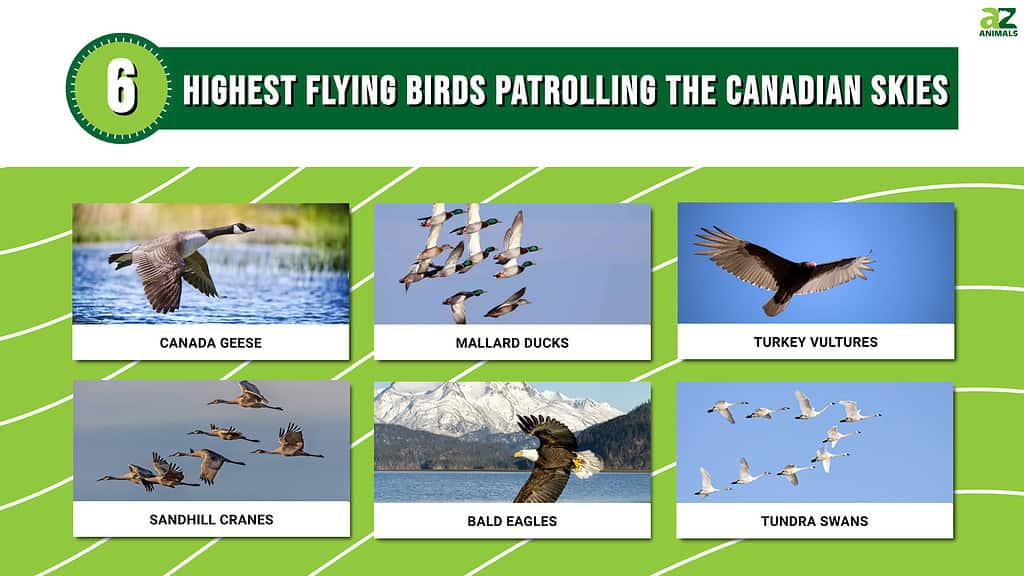
Everything about a bird’s body is adapted for flying. From their feathers to their hollow bones and warm blood, birds are perfectly suited for living their lives soaring through the air. Even their respiratory systems and large hearts are remarkable. But what about the birds that seem to float a little higher than others? Do they have special features that lower-flying birds don’t have? Discover the top six highest-flying birds patrolling the Canadian skies and learn what makes them so special.
Next, check out the highest-flying birds in the U.S.
1. Canada Geese – 29,000 Feet
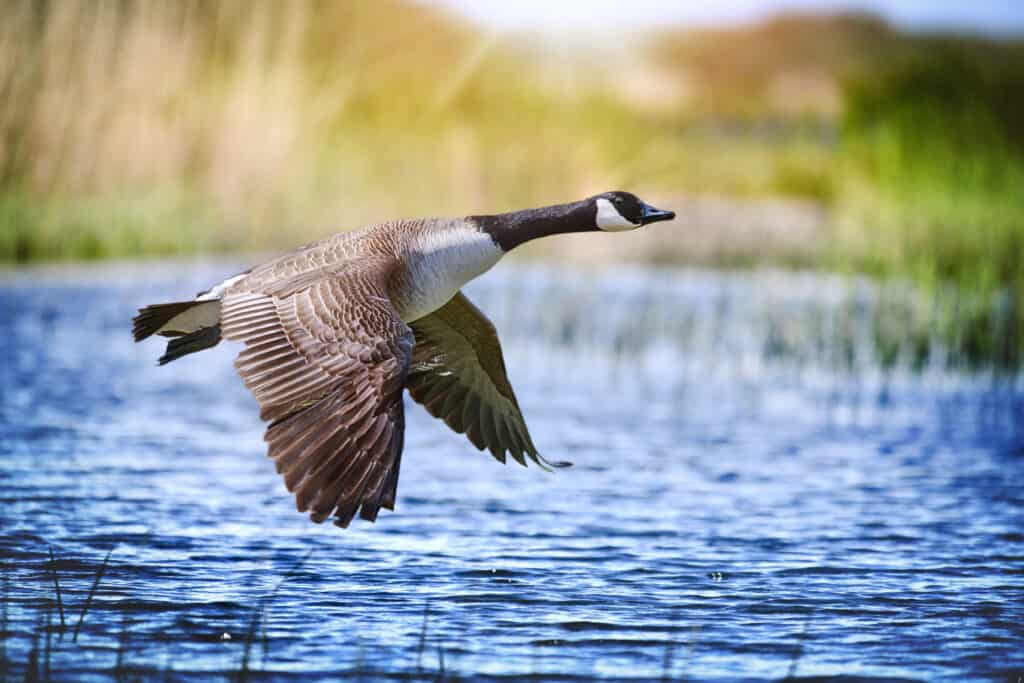
The Canada goose is the highest flying bird in Canada, reaching as high as 29,000 feet.
©Krasula/Shutterstock.com
While the average Canadian geese formation travels around 3,000 feet, these birds have been recorded as high as 29,000 feet, and their max height is unknown. People have even claimed to see them flying over mountain summits. Geese have a specialized breathing structure that captures oxygen from thin air, allowing them to breathe at exceptionally high altitudes. During migration, Canada geese fly around 40 miles per hour. However, they can reach speeds of up to 70 miles per hour with a strong tailwind. When in their famous V-formations, these geese can cover a distance of 1,500 miles within 24 hours.
2. Mallard Ducks – 21,000 Feet
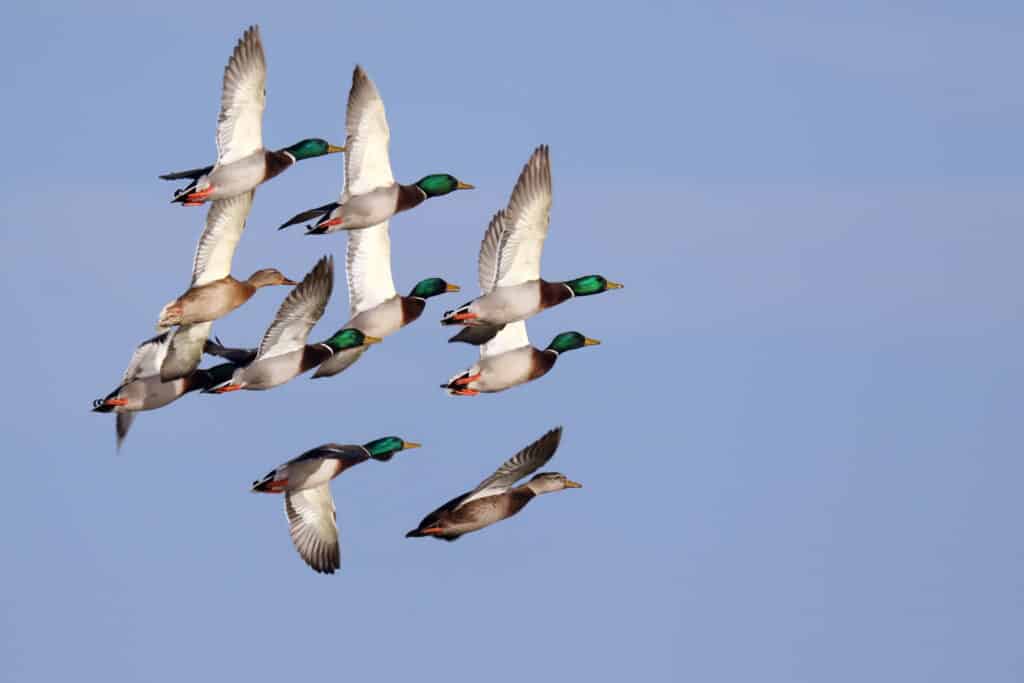
Mallard ducks can fly up to 60 mph
©Jim Nelson/Shutterstock.com
Mallard ducks can reach a max height of 21,000 feet, which was discovered when a jet plane struck one at this altitude. Their normal migration height ranges between 200 and 4,000 feet, though. But 4,000 feet is still relatively high. They travel at these heights because it is more efficient, and they are less likely to encounter predators. Within eight hours, migrating mallards can cover around 800 miles. They are also speedy fliers, capable of reaching 60 miles per hour. At this speed, they are the fastest and highest-flying duck species.
3. Turkey Vultures – 20,000 Feet
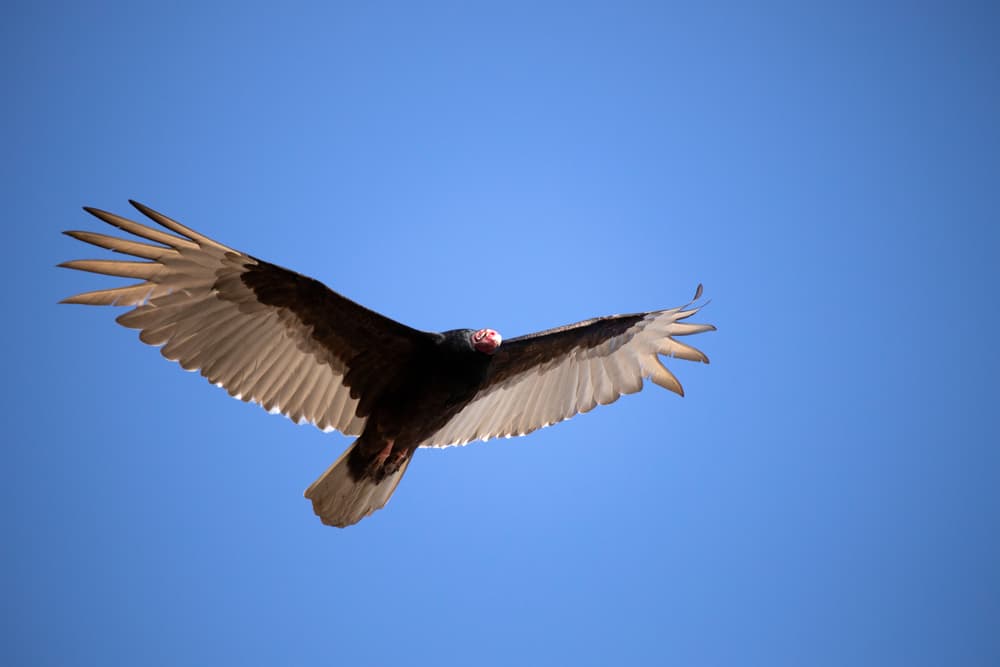
The turkey vulture can climb to altitudes of 20,000 feet
©GarySang/Shutterstock.com
Turkey vultures typically fly between 4,000 and 5,000 feet, but they can progressively climb to 20,000. Like other high-flying birds, turkey vultures benefit from flying at high altitudes. They use natural jet streams to cover long distances with minimal effort. Once they reach the jet stream, they can top out at 60 miles per hour. However, they gradually begin to lose altitude. And they only travel no more than 200 miles in one day. Most of their flying is done near the treetops, about 200 feet above the ground. This altitude gives them the best views for spotting rotting carcasses.
4. Sandhill Cranes – 13,000 Feet
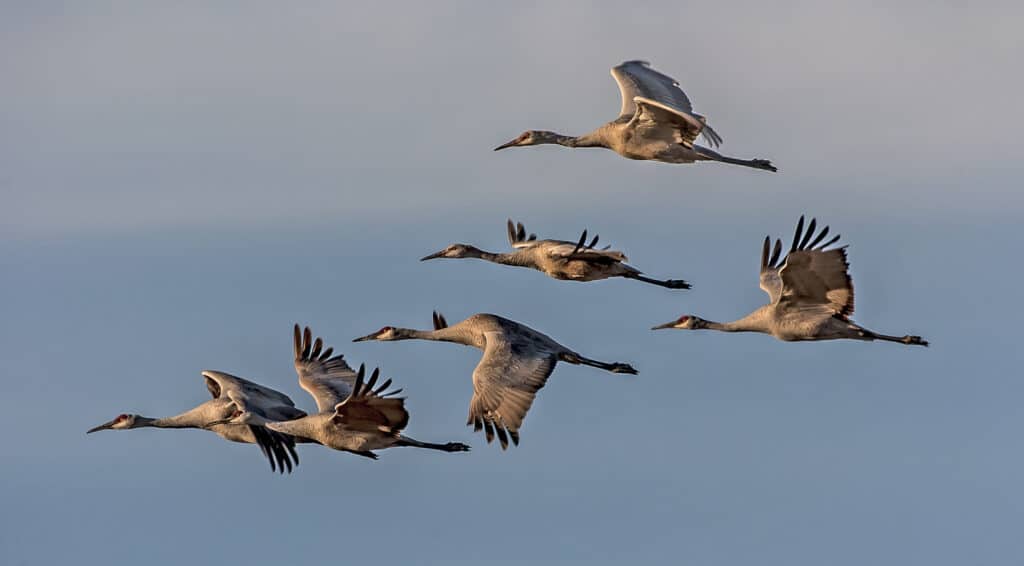
Sandhill cranes can travel over 500 miles in one day
©Tom Zeman/Shutterstock.com
The sandhill crane is an expert migratory bird, making the long journey from Canada and Alaska to the Southwestern United States and Mexico. During migration, sandhill cranes typically keep an altitude between 6,000 and 7,000 feet. But they often get as high as 13,000 feet, especially when they have to move through the Rocky Mountains. These cranes use thermals and tailwinds to help them on their journey, reaching speeds between 35 and 55 miles per hour. And what’s more impressive is that these birds can cover over 500 miles in one day. Their migration may be a long journey, but they get there in no time.
5. Bald Eagles – 10,000 Feet
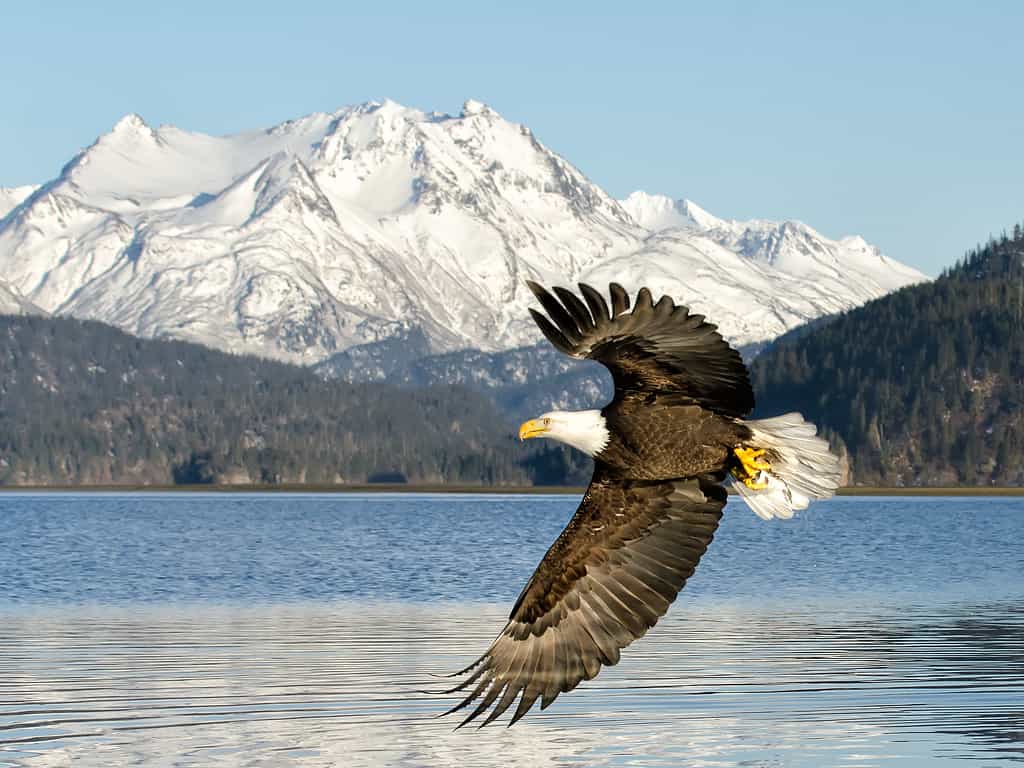
The bald eagle can fly over 100 mph
©iStock.com/Kandfoto
If you were to fly in a small plane, you might look over and see a bald eagle keeping level. These majestic birds can reach heights up to 10,000 feet and keep a steady pace around 35 to 40 miles per hour. However, they can achieve great bursts of speed, topping out at over 100 miles per hour. But often, when we see bald eagles, they are soaring through the air with their enormous seven-foot wings reaching out. And they rely on rising air currents to give them altitude. Bald eagles are partial migrants, meaning some populations may move south during the winter in search of food.
6. Tundra Swans – 8,000 Feet
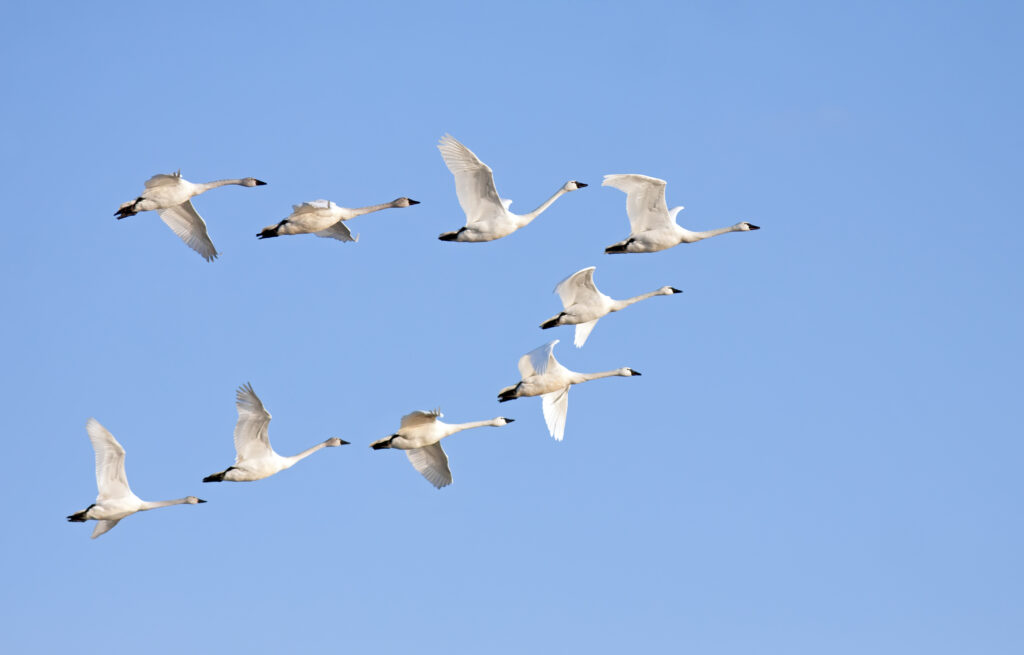
Tundra swans fly in V-formations
©Delmas Lehman/Shutterstock.com
Tundra swans are a sight to behold as they do their takeoff runs, running for a short distance with their necks straight until liftoff. Migrating swans get in their signature V-formations, and they keep to altitudes between 6,000 and 8,000 feet, with a steady pace between 18 and 30 miles per hour. However, individuals can reach speeds of up to 50 miles per hour. During migration, they will fly a total of 4,000 miles each way, achieving several hundred miles every day.
Summary of the 6 Highest Flying Birds Patrolling the Canadian Skies
| Rank | Highest Flying Birds in Canada | Height |
|---|---|---|
| 1 | Canada Goose | 29,000 feet |
| 2 | Mallard Duck | 21,000 feet |
| 3 | Turkey Vulture | 20,000 feet |
| 4 | Sandhill Crane | 13,000 feet |
| 5 | Bald Eagle | 10,000 feet |
| 6 | Tundra Swan | 8,000 feet |
The photo featured at the top of this post is © Jim Nelson/Shutterstock.com
Thank you for reading! Have some feedback for us? Contact the AZ Animals editorial team.







